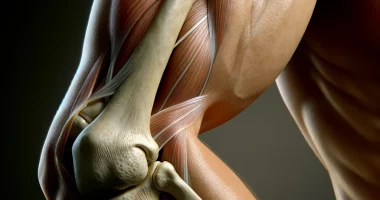Endocarditis
Definition
Endocarditis is inflammation of the connective tissue (inner) lining of the heart, lining its cavities and valves, and is more often infectious. It is manifested by high body temperature, weakness, shortness of breath, cough, chest pain, and thickening of nail phalanges like “drumsticks.” It often leads to damage to the heart valves (more often aortic or mitral), the development of heart defects, and heart failure. Recurrences are possible, lethality in endocarditis reaches 30%.
General information
Infectious endocarditis occurs in the presence of the following conditions: transient bacteremia, damage to the endocardium and vascular endothelium, changes in hemostasis and hemodynamics, and immune disorders. Bacteremia can develop with existing foci of chronic infection or invasive medical manipulations.
Streptococcus plays the leading role in developing subacute infectious endocarditis, and in acute cases (for example, after open-heart surgery), Staphylococcus aureus, less frequently enterococcus, pneumococcus, and Escherichia coli. In recent years, the composition of infectious agents of endocarditis has changed: the number of primary acute endocarditis with a staphylococcal nature has increased. Staphylococcus aureus bacteremia causes infectious endocarditis in almost 100% of cases.
Endocarditis caused by gram-negative and anaerobic microorganisms and fungal infection has a severe course and poorly succumbs to antibiotic therapy. Fungal endocarditis occurs more often with prolonged antibiotic treatment in the postoperative period, with long-standing venous catheters.
Certain general and local factors promote microorganisms’ adhesion to the endocardium. General factors include pronounced immune disorders observed in patients under immunosuppressive treatment, alcoholics, drug addicts, and elderly people. Local factors include congenital and acquired anatomical damage of heart valves and intracardiac hemodynamic disorders arising from heart defects.
Most subacute endocarditis develops in congenital heart defects or rheumatic lesions of the heart valves. Hemodynamic disturbances caused by cardiac malformations contribute to microtrauma of valves (mainly mitral and aortic) and endocardial changes. Microbial colonies contribute to the rapid destruction of the valves; sclerosing, deformation, and rupture may occur. The damaged valve cannot function normally – heart failure develops, which progresses very quickly. There is immune damage to the endothelium of small skin vessels and mucous membranes, leading to the development of vasculitis. It is characterized by impaired permeability of blood vessel walls and the appearance of small hemorrhages. Often, larger arteries have lesions, such as coronary and renal. Often, the infection develops on the prosthetic valve, in which case the causative agent is most often streptococcus.
Factors that weaken the immunologic reactivity of the body contribute to the development of endocarditis. The incidence of infectious endocarditis is constantly increasing worldwide. The risk group includes people with atherosclerotic, traumatic, and rheumatic damage to the heart valves. Patients with interventricular septal defect and coarctation of the aorta have a high risk of endocarditis. The number of patients with prosthetic valves (mechanical or biological) and artificial pacemakers (pacemakers) has increased. The number of cases of infectious endocarditis is increasing due to the use of prolonged and frequent intravenous infusions. Drug addicts often suffer from endocarditis.
Classification of infectious endocarditis
According to the origin, primary and secondary endocarditis are distinguished. Primary usually occurs in septic conditions of various etiologies against the background of unchanged heart valves. Secondary – develops against the background of existing pathology of blood vessels or valves in congenital malformations, rheumatism, and syphilis after valvereplacement surgery or commissurotomy.
According to the clinical course, the following forms of endocarditis are distinguished:
- acute – duration up to 2 months, develops as a complication of acute septic state, severe trauma or medical manipulations on vessels, heart cavities: nosocomial angiogenic (catheter) sepsis. It is characterized by a highly pathogenic pathogen with pronounced septic symptoms.
- subacute – more than two months, develops with inadequate treatment of acute endocarditis or the underlying disease.
- chronic.
In drug addicts, the clinical features of infectious endocarditis are young age, predominant lesion of the tricuspid valve, rapid progression of right ventricular failure and general intoxication, infiltrative and destructive lung damage.
The following forms of the course of endocarditis are distinguished:
- infectious-toxic – characterized by transient bacteremia, adhesion of the pathogen on the altered endocardium, and the formation of microbial vegetations;
- infectious-allergic or immune-inflammatory – characterized by clinical signs of damage to internal organs: myocarditis, hepatitis, nephritis, splenomegaly;
- dystrophic – develops with the progression of the septic process and heart failure. It is characterized by the development of severe and irreversible damage to internal organs, in particular – toxic degeneration of the myocardium with numerous necroses. Myocardial damage occurs in 92% of cases of prolonged endocarditis.
Symptoms of infectious endocarditis
The course of infectious endocarditis may depend on the duration of the disease, the age of the patient, the type of pathogen, and previous antibiotic therapy. In cases of highly pathogenic pathogens (Staphylococcus aureus, Gram-negative microflora), there is usually an acute form of endocarditis and early development of multiorgan failure, in connection with which the clinical picture is characterized by polymorphism.
Clinical manifestations of endocarditis are mainly due to bacteremia and toxemia. Patients have complaints of general weakness, dyspnea, fatigue, lack of appetite, and weight loss. A characteristic symptom of infectious endocarditis is fever – a rise in temperature from subfebrile to hectic, with chills and profuse sweating. Anemia develops, manifested by pallor of the skin and mucous membranes, sometimes acquiring a yellowish-gray color. There are small hemorrhages (petechiae) on the skin, mucous membranes of the mouth and palate, on the conjunctiva of the eyes and eyelid folds, at the base of the nail bed, in the clavicles, arising from the fragility of blood vessels. Fingers take the shape of drumsticks and nails – hourglasses.
Most patients with endocarditis have myocarditis, functional murmurs associated with anemia, and valve damage. When mitral and aortic valve leaflets are affected, signs of their insufficiency develop. Sometimes, angina pectoris is observed, and pericardial friction murmurs are occasionally noted. Acquired valve defects and myocardial damage lead to heart failure.
In the subacute form of endocarditis, emboli of vessels of the brain, kidneys, and spleen are torn off from the leaflets of heart valves, and thrombotic deposits form, accompanied by the formation of infarcts in the affected organs. Hepato- and splenomegaly are detected, and kidneys develop diffuse and extracapillary glomerulonephritis. Less often, focal nephritis, arthralgia, and polyarthritis are possible.
Diagnosis of infectious endocarditis
Collecting the patient’s medical history certifies the presence of chronic infections and previous medical interventions. Instrumental and laboratory tests confirm the final diagnosis of
endocarditis. A large leukocytosis and a sharp increase in ESR are detected in the clinical blood test. Multiple bacterial blood cultures to identify the infectious agent have a significant diagnostic value.
Biochemical blood analysis data can vary widely in one or another organ pathology. Infectious endocarditis changes the protein composition of the blood and the immune status.
Echocardiography is a valuable instrumental study in endocarditis. It allows the detection of vegetation (larger than 5 mm) on the heart valves, which is a direct sign of infectious endocarditis. MRI and CT scans of the heart help make more accurate diagnoses.
Treatment of infectious endocarditis
Infectious endocarditis requires obligatory inpatient treatment; bed rest and diet are prescribed until the patient’s general condition improves. Drug therapy, mainly antibacterial therapy, is the main treatment, and it is started immediately after a bacterial blood culture. The choice of antibiotic is determined by the sensitivity to the pathogen, preferably broad-spectrum antibiotics.
In the therapy of endocarditis, penicillin antibiotics in combination with aminoglycosides have a good effect.
Non-hormonal anti-inflammatory drugs are added to the treatment of concomitant diseases (myocarditis, polyarthritis, nephritis). If drug treatment does not produce an effect, surgical intervention is indicated. Heart valve prosthetics with excision of damaged areas (after the transition to a chronic form) are carried out. Surgical interventions should be carried out by a cardiac surgeon only when indicated and accompanied by antibiotics.
All these treatment options are available in more than 630 hospitals worldwide (https://doctor.global/results/diseases/endocarditis). For example, Aortic valve replacement (AVR) can be done in 29 clinics across Turkey for an approximate price of $12.0 K (https://doctor.global/results/asia/turkey/all-cities/all-specializations/procedures/aortic-valve-replacement-avr).
Prognosis in infectious endocarditis
Infectious endocarditis is one of the most severe cardiovascular diseases. The prognosis in endocarditis depends on many factors: existing valve lesions, timeliness and, adequacy of therapy, etc. The acute form of endocarditis without treatment ends with a fatal outcome in 1 – 1.5 months and the subacute form – in 4-6 months. In the case of adequate antibacterial therapy, lethality is 30%, and in the case of infection of prosthetic valves – 50%. In elderly patients, endocarditis is more sluggish, often not diagnosed immediately, and has a worse prognosis. In 10-15% of patients, there is a transition of the disease into a chronic form with relapses of exacerbation.
Prevention of infectious endocarditis
Persons at increased risk of endocarditis are monitored and controlled. This applies primarily to patients with prosthetic heart valves, congenital or acquired heart defects, vascular pathology, a history of endocarditis, and foci of chronic infection (dental caries, chronic tonsillitis, chronic pyelonephritis).
The development of bacteremia can accompany various medical manipulations: surgical interventions, urological and gynecological instrumental examinations, endoscopic procedures, tooth extraction, etc. A course of antibiotic therapy is prescribed for these interventions for prophylactic purposes. It is also necessary to avoid hypothermia and viral and bacterial infections (influenza, sore throat). It is necessary to sanitize foci of chronic infection at least once every 3 – 6 months.



